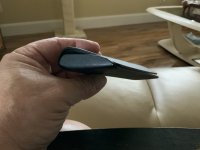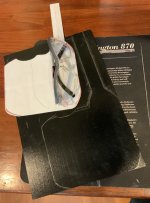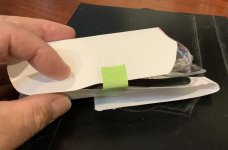aCircle
Member
- Joined
- Nov 24, 2020
- Messages
- 45
I've been thinking more and more about giving Kydex a go. Recently had a beautiful pair of Ernest Wright shears show up in my shop and been thinking that Kydex is a great option for a way to protect them without trapping moisture like leather would.
Curious to hear everyone's experience. Searching through the history I'm surprised to find there's only been a bit of discussion on the material. It looks pretty easy to use... am I missing something?
For anybody curious, two examples of the material are here and here.
Curious to hear everyone's experience. Searching through the history I'm surprised to find there's only been a bit of discussion on the material. It looks pretty easy to use... am I missing something?
For anybody curious, two examples of the material are here and here.







